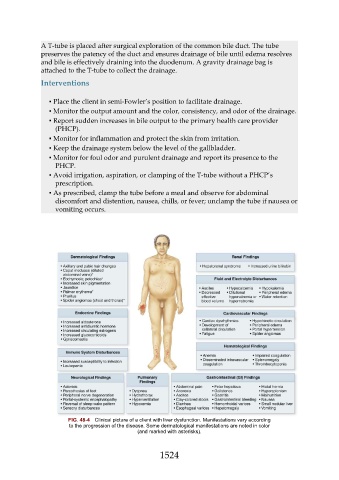Page 1524 - Saunders Comprehensive Review For NCLEX-RN
P. 1524
A T-tube is placed after surgical exploration of the common bile duct. The tube
preserves the patency of the duct and ensures drainage of bile until edema resolves
and bile is effectively draining into the duodenum. A gravity drainage bag is
attached to the T-tube to collect the drainage.
Interventions
▪ Place the client in semi-Fowler’s position to facilitate drainage.
▪ Monitor the output amount and the color, consistency, and odor of the drainage.
▪ Report sudden increases in bile output to the primary health care provider
(PHCP).
▪ Monitor for inflammation and protect the skin from irritation.
▪ Keep the drainage system below the level of the gallbladder.
▪ Monitor for foul odor and purulent drainage and report its presence to the
PHCP.
▪ Avoid irrigation, aspiration, or clamping of the T-tube without a PHCP’s
prescription.
▪ As prescribed, clamp the tube before a meal and observe for abdominal
discomfort and distention, nausea, chills, or fever; unclamp the tube if nausea or
vomiting occurs.
FIG. 48-4 Clinical picture of a client with liver dysfunction. Manifestations vary according
to the progression of the disease. Some dermatological manifestations are noted in color
(and marked with asterisks).
1524

